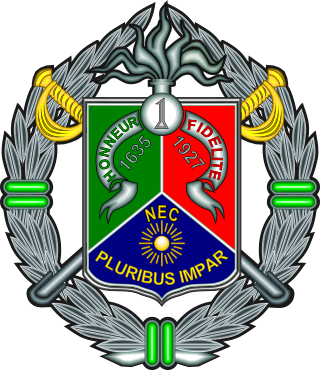
The 1st Foreign Cavalry Regiment is the only cavalry regiment of the Foreign Legion in the French Army. It is one of two armoured cavalry regiments of the 6th Light Armoured Brigade.
The 19th Army Corps was a corps of the French army. In December 1870, the Tours delegation created the 19th Army Corps which was formed in Alençon. It was recreated by decree of the JO of August 13, 1874, it brought together the various military units of Algeria. It constituted the nucleus of the Army of Africa.
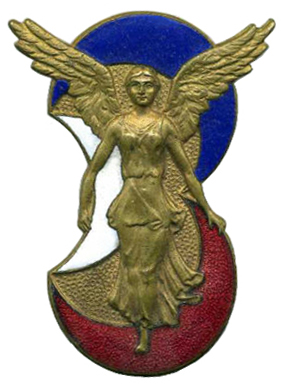
The 3rd Algerian Infantry Division was an infantry division of the Army of Africa which participated in World War II.

The 2nd Foreign Infantry Regiment is an infantry regiment of the Foreign Legion in the French Army. The regiment is one of two mechanized infantry regiments of the 6th Light Armoured Brigade.
This is the order of battle for the Syria–Lebanon campaign, a World War II campaign between the Western Allies and Vichy France during June and July, 1941.
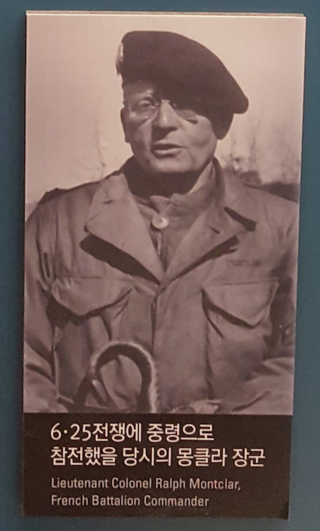
Raoul Charles Magrin-Vernerey, also known as Ralph Monclar was a French officer and 2nd Inspector of the Foreign Legion who fought in World War I, World War II within the ranks of the Free French Forces and led the French Battalion in the Korean War. He was also one of the first senior officers to respond to the Appeal of 18 June.
This is the order of battle for the Battle of Belgium, a World War II battle between German and Allied forces in Belgium on 10–28 May 1940.
René Jacques Adolphe Prioux was a general of the French Army who served in both world wars. A cavalry officer of great talent, Prioux rapidly rose through the officer ranks and commanded the Cavalry Corps of the First Army during the Battle of Belgium in May 1940. He was captured by the Germans and spent two years as a prisoner of war. Repatriated in 1942, Prioux came to be seen as a strong supporter of the Vichy regime and was consequently removed from a position of authority in the French Army by Charles de Gaulle, the leader of the Free French, after the landings in French north Africa by U.S. and British forces in November 1942.

The Foreign Legion Detachment in Mayotte is a detachment of the Foreign Legion based on the island of Mayotte, near Madagascar. It is the smallest operational unit of the French Army. The main role of the detachment is to maintain a French presence in the region, enabling the French armed forces to quickly react to events in the Indian Ocean and the east coast of Africa.

The 2nd Foreign Cavalry Regiment was a cavalry regiment of the Foreign Legion in the French Army. the regiment was dissolved twice, in 1946 and 1962; the regimental colors have been entrusted to the Foreign Legion Detachment in Mayotte since 1984.
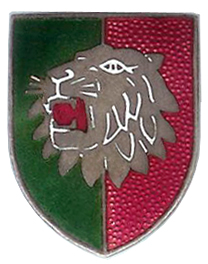
The 97th Reconnaissance Group of the Infantry Division was a motorized cavalry unit composed of members of the French Foreign Legion which existed briefly at the beginning of the Second World War. The unit was involved in the Battle of France until France's surrender to Germany; the 97th GRDI remained intact for a few months after the surrender until it was disbanded on September 30, 1940.

Viscount Armand-Octave-Marie d'Allonville was a French general of division which distinguished himself during the French conquest of Algeria and the Crimean War. He was later appointed senator.
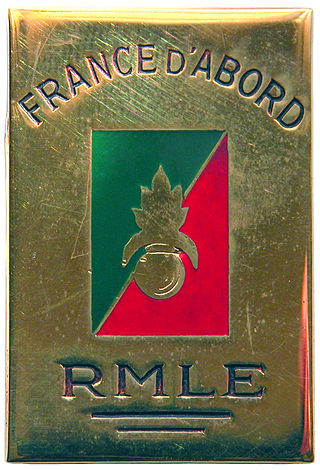
The Marching Regimentof the Foreign Legion (RMLE) was a French military unit that fought in World War I and World War II. Initially composed of marching regiments from the 1st Foreign Regiment of Sidi Bel Abbes and the 2nd Foreign Infantry Regiment of Saida, Algeria, it re-formed as the 3rd Foreign Infantry Regiment.
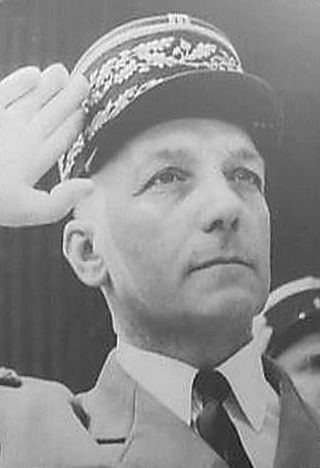
Jean Olié was a Général of the French Army and the 1st Inspector of the Autonomous Group of the Foreign Legion serving primarily in the Foreign Legion from 1924 to 1961.

Gabriel Bablon was a French army officer and Compagnon de la Libération. A Legion Officer seconded from the ranks, who had already accumulated more than fifteen years of service, when the Second World War began, he refused defeat and continued fighting in the ranks of the Free French Forces. Engaged in the Western Desert Campaign, he illustrated capability during the Battle of Bir Hakeim and the Second Battle of El Alamein. Later he participated to the Italian campaign and the Liberation of France. Pursuing later his military career after the war, he served in Indochina and in Germany before retiring.

Paul Gardy was Général de brigade of the French Army and Commandant of the Foreign Legion in 1951 and 1958.
Gustave Fourreau (1920–1994) was a Général de brigade of the French Army and commandant of the Foreign Legion.
A regiment de marche is a French temporary, regiment created for a specific campaign or other military purpose.
The Groupes Franc Motorisé de Cavalerie or GFC was a type of autonomous unit of the French Army created during the Nazi Invasion. Taking inspiration for their name from the Corps Francs which had played an important role in the Phoney War, they were a very early attempt to create truly independent Combined Arms Combat Teams. Although little more than Company sized, they had organic Armored, Artillery, and Infantry elements all rolled into one small and highly mobile force. They were created somewhat out of desperation in response to the rapid German advance into France and operated as independent strike forces with great latitude of movement. Although they were found to be quite effective, their existence died with the Third Republic.

Gabriel, Marie, Joseph Bougrain was a general of the French Army who commanded the 2nd Light Mechanized Division during World War II. He is buried in the cemetery of Sainte-Marie-de-Ré.
.











